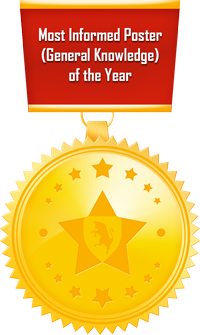Researchers from Baylor University’s Institute for Studies of Religion released these survey results in a standing-room-only press conference in Washington, D.C., on September 18.
The pool of 1,721 respondents from across the United States said they had been touched by the divine in other ways as well. More than half (55 percent) said they had personally been protected from harm by a guardian angel, and 20 percent reported hearing the voice of God speaking to them.
“Religious and mystical experiences are an overlooked aspect of our national religious life, neglected by researchers and ignored or even denied by leading theologians and seminary professors,” writes religion professor Rodney Stark in What Americans Really Believe, the book that analyzes the survey’s findings.
I took up Stark’s challenge and asked Christopher Bader, one of the researchers, to tell me a little bit about the people behind these statistics.
For one thing, Bader explained, more women than men (18 percent compared to 13 percent) report having had a miraculous healing, and nonwhites are more than twice as likely as whites to report the same. Education and income levels also enter into it: Basically, the more education you have, and the more money you earn, the less likely you are to report a miraculous healing.
That said, although half of those who say they have been miraculously healed had only an eighth-grade education, 1 in 10 had postgraduate degrees. In other words, belief in these experiences touches people from all walks of life.
Pentecostals and African-American Protestants were far more likely than other groups, such as mainline Protestants or Catholics or Jews, to say they have either witnessed or experienced a miraculous healing firsthand.
But I still had more questions. What do these experiences feel like? Are they dramatic transforming moments or a gradual feeling of recovery in spite of the odds? Does it usually happen in a religious setting, like a church or revival, or can it happen in a hospital under the care of doctors? And the $60,000 question: Can science prove that a miraculous healing has taken place?
Unfortunately, the Baylor survey—though broad in scope—didn’t touch on those topics.
But I did find one story, featured on the evangelical TV show The 700 Club, about Waid Kidd, a man who suffered from post-polio syndrome, a painful, incurable condition that left him debilitated. A churchgoing man, Kidd had been prayed over many times, according to the report, to no avail. Yet one Sunday, he felt “called” to have church members lay hands on him. “The power of the Lord starting pouring over me,” he said.
“As I can best describe it, it was a bucket of warm water, and it was slowly poured over the top of my head. It went down over me, except it didn’t just go down over me; I felt it go through me. It went all the way to my feet and went out of [my] heels. I realized the pain was gone.”
While I have never experienced such severe illness or such dramatic healing, I wonder if others who have had such experiences may be reluctant, for fear of ridicule, to share their stories. I hope this study and the interest in it will start the discussion about this “overlooked aspect” of religious life in America.
http://www.aolhealth.com/health/miracle-healing?icid=100214839x1211286267x1200669336
The pool of 1,721 respondents from across the United States said they had been touched by the divine in other ways as well. More than half (55 percent) said they had personally been protected from harm by a guardian angel, and 20 percent reported hearing the voice of God speaking to them.
“Religious and mystical experiences are an overlooked aspect of our national religious life, neglected by researchers and ignored or even denied by leading theologians and seminary professors,” writes religion professor Rodney Stark in What Americans Really Believe, the book that analyzes the survey’s findings.
I took up Stark’s challenge and asked Christopher Bader, one of the researchers, to tell me a little bit about the people behind these statistics.
For one thing, Bader explained, more women than men (18 percent compared to 13 percent) report having had a miraculous healing, and nonwhites are more than twice as likely as whites to report the same. Education and income levels also enter into it: Basically, the more education you have, and the more money you earn, the less likely you are to report a miraculous healing.
That said, although half of those who say they have been miraculously healed had only an eighth-grade education, 1 in 10 had postgraduate degrees. In other words, belief in these experiences touches people from all walks of life.
Pentecostals and African-American Protestants were far more likely than other groups, such as mainline Protestants or Catholics or Jews, to say they have either witnessed or experienced a miraculous healing firsthand.
But I still had more questions. What do these experiences feel like? Are they dramatic transforming moments or a gradual feeling of recovery in spite of the odds? Does it usually happen in a religious setting, like a church or revival, or can it happen in a hospital under the care of doctors? And the $60,000 question: Can science prove that a miraculous healing has taken place?
Unfortunately, the Baylor survey—though broad in scope—didn’t touch on those topics.
But I did find one story, featured on the evangelical TV show The 700 Club, about Waid Kidd, a man who suffered from post-polio syndrome, a painful, incurable condition that left him debilitated. A churchgoing man, Kidd had been prayed over many times, according to the report, to no avail. Yet one Sunday, he felt “called” to have church members lay hands on him. “The power of the Lord starting pouring over me,” he said.
“As I can best describe it, it was a bucket of warm water, and it was slowly poured over the top of my head. It went down over me, except it didn’t just go down over me; I felt it go through me. It went all the way to my feet and went out of [my] heels. I realized the pain was gone.”
While I have never experienced such severe illness or such dramatic healing, I wonder if others who have had such experiences may be reluctant, for fear of ridicule, to share their stories. I hope this study and the interest in it will start the discussion about this “overlooked aspect” of religious life in America.
http://www.aolhealth.com/health/miracle-healing?icid=100214839x1211286267x1200669336
 Buy on AliExpress.com
Buy on AliExpress.com
